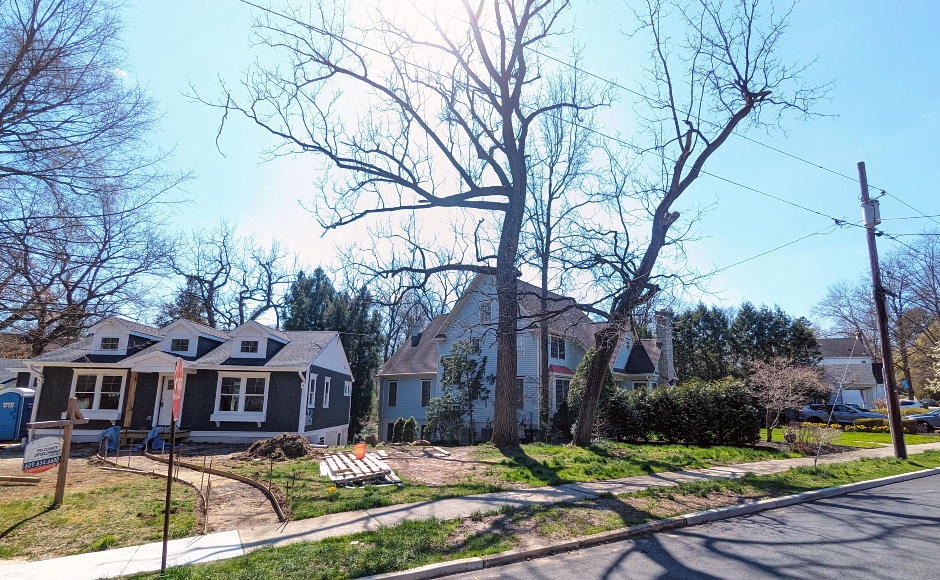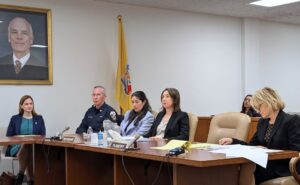A jury unanimously ruled in favor of four households that allege the borough government and New Jersey American Water failed to address the infrastructure issues that ruined their homes.
By Matt Skoufalos | March 30, 2024
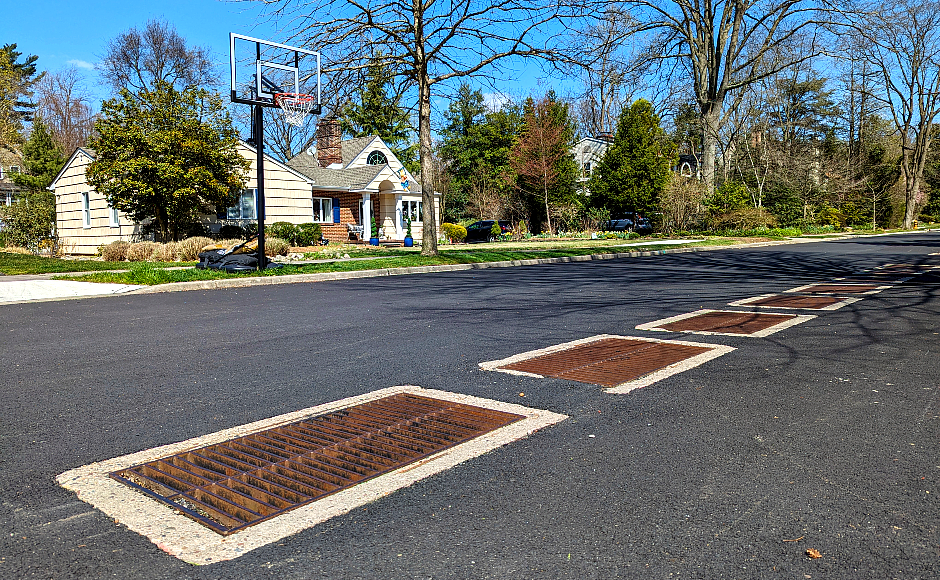
Stormwater catchments in the middle of Heritage Road in Haddonfield, where homeowners suffered irreparable stormwater damage. Credit: Matt Skoufalos.
Last week, four Haddonfield families whose homes were damaged by stormwater to the point of becoming uninhabitable won a nearly $22-million judgment against the borough in Camden County Superior Court.
A 10-member jury ruled unanimously in favor of the plaintiffs on 18 separate counts of nuisance, trespass, dangerous condition, and inverse condemnation.
The verdict upholds their claim that the Haddonfield municipal government did not effectively maintain public infrastructure that would have prevented their homes from being damaged by flooding, and furthermore, directed the stormwater at their properties.
Attorney Robert Sokolove of the Philadelphia-based Weir Greenblatt Pierce, LLP said that his clients — Michael and Denise Amons, Stephen and Marlee Lick, John Crowe, and Peter, Eric, and Charles Weber — suffered irreparable damage to their homes in a rainstorm that flooded the neighborhood on June 20, 2019.
Three of the properties are located in the unit block of Lafayette Avenue at the intersection of Atlantic Avenue, where the PATCO Speedline runs; the fourth is located around the corner on Heritage Road. Their rear yards all border a ravine at the bottom of a large hill that Sokolove said the borough has been using “as a de facto retention pond.”
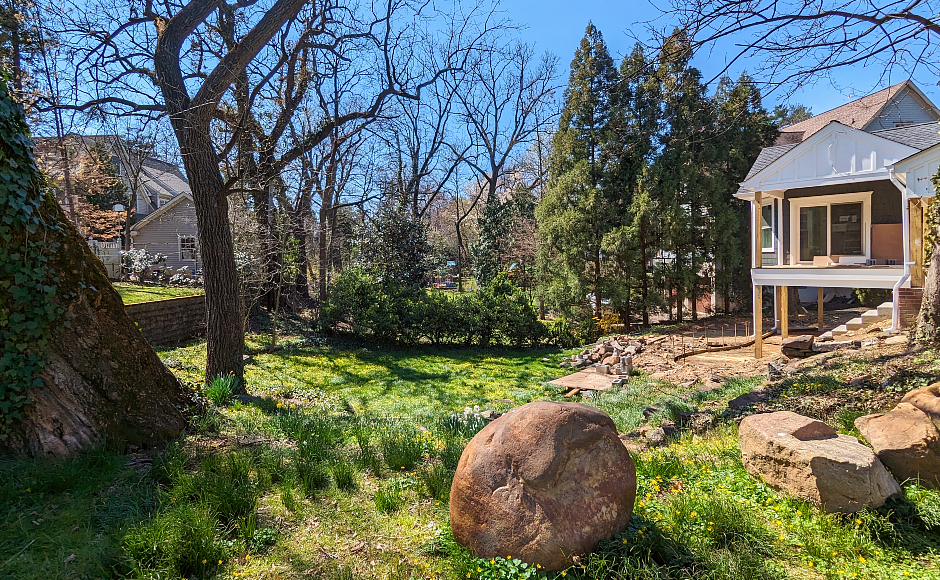
A ravine behind the homes on Lafayette Ave. and Heritage Rd. in Haddonfield frequently floods during significant storms. Credit: Matt Skoufalos.
“My clients’ properties are downhill of basically the entire, 101-acre watershed,” Sokolove said.
“The town was apparently unaware, until they hired an expert, that it’s a 101-acre watershed,” he said.
“That’s 67 percent bigger than the 60-acre watershed that their engineers, Remington and Vernick, said it was.”
Compounding the matter, Sokolove said, is that the collected stormwater from that watershed drains through piecemeal systems that terminate in a 48-inch pipe — as he termed it, “the equivalent of turning a firehose on your bathtub and expecting the water to go through.”
In the 2019 storm, the properties on Lafayette and Heritage were flooded with “eight to ten feet of stormwater, human waste, tampons, condoms” and other matter from a drainage system that both failed and was under-engineered for the volume of water it was asked to facilitate.
“You can’t design a drainage system unless you know how much water you have to account for, and they were off by 67 percent,” Sokolove said. “Even if they had the size of the watershed, and therefore the amount of water, correct, it was a bubblegum-and-tape fix.
“They were good at adding pipes and drains to get more water off the streets upstream, but they’re bringing more water, faster, down to where my clients’ properties are, which exacerbates the problem for them,” he said.
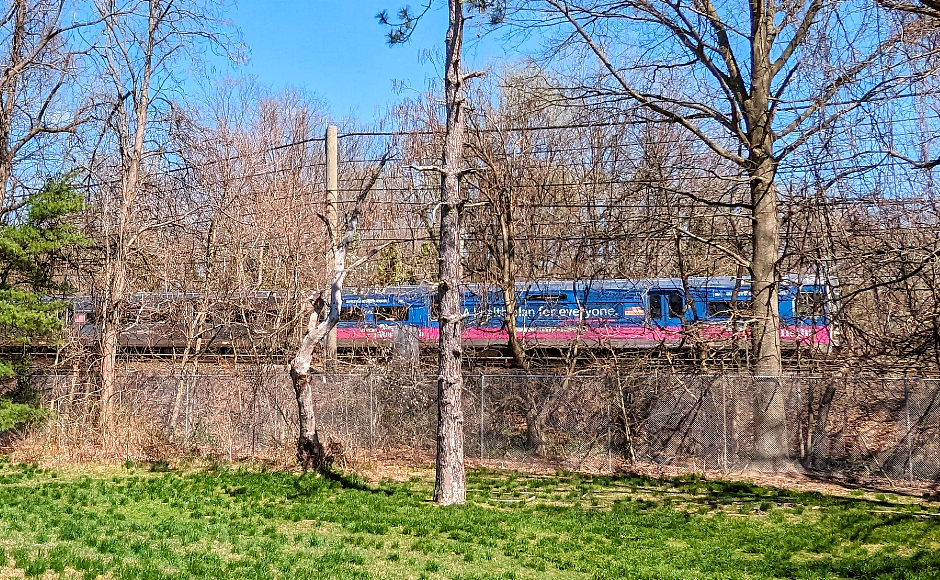
The PATCO Speedline tracks that run along Atlantic Avenue in Haddonfield overlook a floodplain. Credit: Matt Skoufalos.
The infusion of waste made the plaintiffs’ homes smell foul in a way that property owners were never able to remediate, Sokolove said, thereby making them unsalable in the future, even as no corrective action was taken by the municipality to remediate the impact of subsequent flooding in the area.
Moreover, the New Jersey Flood Risk Notification Law signed in July 2023 requires commercial and residential property owners to disclose flood history and future flood risk information, meaning the lots affected by the flooding would be unmarketable as well, he said.
The maximum amount of flood insurance a homeowner can purchase in a community that’s enrolled in the National Flood Insurance Program (NFIP) is as much as $250,000 for a building and $100,000 for its contents. The homes in Haddonfield were valued in excess of both.
“I don’t know anywhere in the country where the damages were as great as they were [here] for a handful of houses,” Sokolove said. “This case, in my opinion, will start to become a wakeup call for some municipalities,” he said.
The fallout from the case extended beyond the failures of engineering and design into months of human despair, as the homeowners struggled to address the impact of the destruction.
The wheelchair-bound Charles Weber, who’d built his own home on Lafayette Avenue, had to be rescued from it as the flooding encroached. He was moved into a nursing home, where he later died of novel coronavirus (COVID-19) during the pandemic of 2020 that followed.
Stephen Lick lived on Heritage Road until his passing last summer; Sokolove said “his last memories on this Earth” were spent cleaning up the waste that had polluted his home.
“There was a lot of what euphemistically is termed as pain and suffering,” the attorney said.
Sokolove, who is a national expert on flood cases, worked with the Federal Emergency Management Agency (FEMA) flood program in its early days, and holds a certificate degree in hydraulics and hydrology from the University of California.
He believes the decision in this case could become a reference point for other communities to estimate their stormwater management risk obligations.
“There are thousands of older communities that didn’t design their drainage systems very well, or upgrade them over 100 years,” Sokolove said.
“At some juncture, you’ve got to start to re-evaluate, and you have to address it.
“Somebody’s going to be downhill in every community,” he said. “Times are changing, the standards should be changing, and your duty as a municipality to provide safety, health, and welfare, goes up.”
If the award is upheld, the plaintiffs might consider turning their properties over to the state Green Acres program, simply converting them into a retention basin.
“Let it become green infrastructure,” Sokolove said. “That’s what it should be. That’s it’s best use.”
The Borough of Haddonfield declined comment for this story. New Jersey American Water, which was also a named defendant, settled its stake in the case outside of court, Sokolove said.


